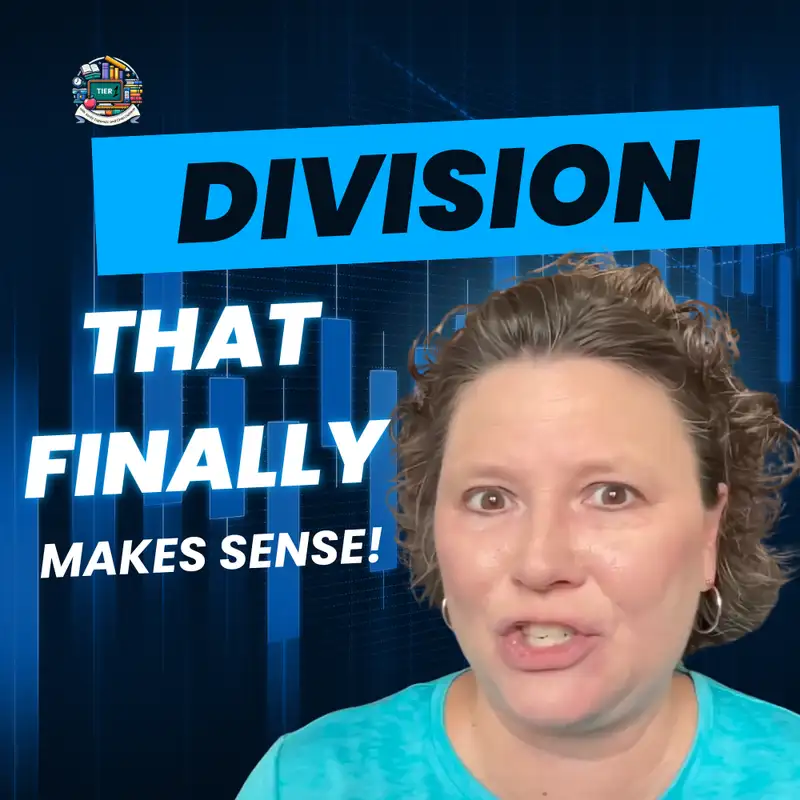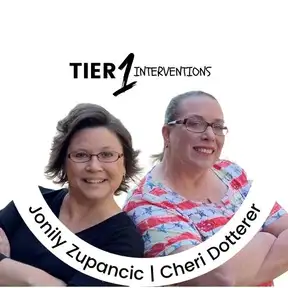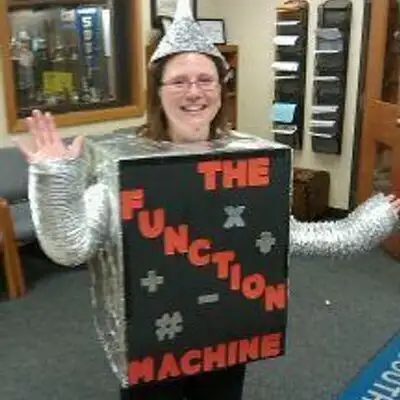
The Division Rule that EVERY Teacher Misses
Division that finally makes sense
===
[00:00:00]
Jonily: The goal here is not accuracy and efficiency.
Accuracy and efficiency focuses on procedures improving number sense. Is the opposite of a focus on procedures. We need both. But today we're gonna focus on the thinking, reasoning, and sense making and the gap filling methods,
Hey friend Cedric here.
Today’s episode builds on something we all wrestle with: how do we teach math in a way that actually sticks?
Because let’s be honest—division gets taught in a hundred different ways, but most students still struggle to explain it, let alone own it.
That’s why today, Jonily is walking you through the division rule every teacher misses—and showing you how “division is counting” unlocks the kind of number sense that changes everything.
And if what you hear today lights [00:01:00] a fire in you, I’ve got something special for you coming up mid-episode: a free masterclass on August 13 where Jonily and I will walk you through our classroom blueprint to change math outcomes with pattern-based interventions, not more worksheets.
Alright—let’s dive in.
Hello and welcome to Tier One Interventions podcast, where we talk about strengthening your core classroom that is, and specifically your tier one general core math classroom. We are support for academic and non-academic interventions here at Tier one Interventions for all educators. Support specialists, school leaders, interventionists, and instructional coaches.
Today's podcast episode is an extension of a previous podcast episode that was released on January 7th, 2025, titled Division Mastery. Is easier than you think. We will [00:02:00] extend on the three math rules that never expire. And today's episode we'll focus on the first extension, which is division is counting.
I'm your host today, Jay-Z. Jay-Z in the house. Jonily Zupancic that is, and we are going to explore two additional cycles of division. Which is a math rule that does not expire when we relate to division to counting. Here are the cycle sets that we're gonna focus on today, and I'm showing you my screen at this point.
If you are listening to Tier One Interventions podcast on your favorite podcast app or your favorite podcast network, and you cannot see the visual. No worries. I'm gonna explain exactly what I'm doing. However, if you re-listen to watch on YouTube at Tier One Interventions podcast, you will see [00:03:00] a copy of the cycles and me acting out the notes as I'm sharing with you today.
Today we're gonna look at division cycles, h and l as division is counting. Rule number one of math rules that never expire is extended on today's podcast cycle. H looks like this. Here are the four problems that I will read to you. Cycle H is eight divided by four, eight divided by one fourth. 96 divided by four and four decimal, five divided by zero, decimal two five.
Those are the problems in cycle H. We're gonna walk through each of these problems with the philosophy of using division as counting for the purpose [00:04:00] of improving number sense thinking, reasoning and sense making. Also improving contextual, conceptual sensory minds on approaches to math achievement. The goal here is not accuracy and efficiency.
Accuracy and efficiency focuses on procedures improving number sense. Is the opposite of a focus on procedures. We need both. But today we're gonna focus on the thinking, reasoning, and sense making and the gap filling methods, thought processes, and mindset that we need students to have to improve their number sense and fill those gaps.
Of their lack of understanding of number, so the first problem, eight divided by four. Typically, I like to use paper strips. You can use any objects. Eight [00:05:00] divided by four. I could show this visually with paper strips, but we need to define, remember that the second number in division is my counting number.
It's my skip counting number, and my Landon number is the first number, which is eight. So I'm going to skip count by fours, so I'm going to write a bunch of fours here. 4, 8, 12, 16, 20. Skip counting by fours. However, if students have a deep understanding of division and skip counting in general, and as we're improving their number sense, the question becomes.
When do we stop? We stop when we get to this Landon number. So the question is, how many skip counts does it take to land on eight if we're skip counting by 4, 4, 8? Didn't need these skip counts. But again, this is not about efficiency and accuracy, it's about experimenting. And [00:06:00] experiencing mathematics to improve our number sense, which is a conceptual, contextual, sensory, emotionally based skill that students need to have to improve overall math achievement.
If we're using our paper strips, we can actually have eight paper strips, skip count by chunks of four. So there are ways that we can use tools to be able to do that. Let's look at our second example. Same method. Our skip counting number is one fourth, our Landon number is eight. I'm gonna treat this just like I treated the previous one.
Here is the power and impact of these division cycles and treating division as counting. Again, the impact is not efficiency and accuracy, which [00:07:00] ultimately we are going to get there. But without focusing on that first, we can focus on generating good number, sense and estimation skills with students.
We're also gonna focus on the same strategy and. I can with my second and third graders, my eight, nine year olds, I can introduce them to division problems with fractions before the standards say that we're going to expose to them division problem with fractions. The reason I can do this is. Division is just counting.
So my counting number is one fourth. So again, I'm going to write down a bunch of one fourths, one fourth, one fourth, one fourth. So it is really a great exercise in improving number sense to skip count, but oftentimes we do not extend that to skip counting by fraction. So one [00:08:00] fourth. And one fourth. So kids are gonna wanna say two eighths.
However, we go to this paper strip and we fold in half, twice to make four equal parts. Each part has a value of one fourth. So by using this manipulative, by using this math tool, by using this sensory, concrete, hands-on experience. Students can see that this is a value of one fourth. And so if I have a one fourth and another one fourth, I just have two of those fourths, three fourths, four fourths.
So we have to teach kids how to skip count by fraction. And one way that I do this is especially for my younger students and my struggling students, is instead of writing the symbol one over four, I write the number one and the word. Fourth. So this is what I do with [00:09:00] my 5, 6, 7 year olds. When we're skip counting, we're just skip counting by whole numbers with a word that describes the size.
Of what we're skip counting so we can eliminate the notation and still give younger students or struggling students access to division by fraction. So I'm gonna count one fourth, two fourths, three fourths, four fourths, five fourths, six fourths, et cetera, et cetera. Now how do I know when to stop? When I have a paper strip, four fourths, that equals one whole paper strip.
So once I get to four fourths, I have one whole paper strip. Now if one fourth is my skip counting number. Okay, my first number in the division problem is my Landon number. I wanna land on eight or eight holes, or eight full paper strips, so I [00:10:00] have to lay out eight full paper strips just like this and count how many of these pieces I have.
1, 2, 3, 4, 5, 6, 7, 8, 9, 10, 11. I count all of these. Once I figure out how many pieces I have, I will see that I have 32 pieces. 32 of what I write the word F-O-U-R-T-H-S. I have 32 counts, basically 32 fourths. Is what I was counting. So the question is, if I skip count by one fourths to land on eight, how many counts will that take by fourths?
It will take 32. So the answer to eight divided by one, TH one fourth is 32. Now let's use the same strategy, but now we're gonna have a little different feeling about this when we see the [00:11:00] third example, 96 divided by four. Again, the second number is four. That is our skip counting number 4, 8, 12, 16. 2024.
Now I know what you're thinking. Do dot. My Landon number is the first number, which is 96. I know what you're thinking. Why in the world would we ever use this method of skip counting for division because this is not efficient and there's a lot of room for error by skip counting. So many counts. But remember.
This is to improve number sense. Improving number sense is often negated by using procedures that focus on accuracy and efficiency. Accuracy and efficiency are of the utmost importance. That is our ultimate goal. However, along the [00:12:00] way, if we continue to negate number sense. Our kids look at a problem like this, 96 divided by four, and have no sense of estimation of whether that's gonna be a large or a small number.
Let's go back to our previous examples, eight divided by four. Because I know this skip counting method, I can look at those numbers and saying to myself, oh, that's not gonna take a lot of counts. If I look at eight divided by one fourth, I might initially look at that and say, oh, that's not gonna take a lot of counts.
Maybe it's gonna take two counts. But as I start to skip count by one fourth, that's where the gap filling happens. So students are gonna look at this and they're gonna say, eight divided by one. Fourth. The answer is two, it's gonna take two counts to land on eight. Perfect. Let's go through the non-efficient non procedural process.
It's only then when kids are forced to go through the non-efficient non procedural process that they discover [00:13:00] themselves, the error in their thinking, and they start to fill in. Those gaps with solid ground, improving their number sense, one fourth, two fourths, three-fourths, four fourths. Oh, I only landed on 1 5, 4, 6, 4, 7, 4, 8, fourth.
Okay. Took eight counts to land on two. Gosh, I gotta get to eight. Now I can look at division problems and have a concept for estimation. Students that have dyscalculia or struggles with mathematics or the identified math learning disability. I cannot effectively estimate without those estimation skills, I can never achieve accuracy and efficiency.
So we must fill in the gap with conceptual skills to achieve maximum efficiency and accuracy through procedures. Estimation [00:14:00] skills are the first skills we wanna build with students that have struggles in mathematics or an identified learning disability such as dyscalculia. So you can see the progression of this process.
Again, it's not about procedure, it's not about efficiency. But what I want is I want kids to look at this and say, okay, my second number is four. That's my skip counting number. My Landon number is 96. Oh my gosh, that's gonna be so many counts. I need a different way to do this quicker. That's what we want students to be begging for.
If we want students hungry and thirsty for mathematics, we need to put them through experiences just like this. Wrapping their mind around a vision, being skip counting, that's accessible for everyone to then improve their estimation of a computation problem, and ultimately be begging for efficiency and [00:15:00] accuracy.
Hey everybody, Cheri here. I'm just interrupting John Lee for a moment 'cause I just wanted to share something that we have. Coming up on August 13th, we have a masterclass that we are gonna be doing for you. So here's what is included in that masterclass. We're going to show you how we preplan. We plan and we present lesson plans.
They aren't the same as what you might think when you're thinking of a traditional lesson plan. So I just want you to hear me. When John Lee is preparing a lesson plan, she uses an indirect model rather than a direct. Instruction model to set up her instruction. So tune in on au August 13th so that you can hear what she has to say.
We're also gonna give you the [00:16:00] slides and print some printable downloads that you can use right away. And I know OTs are thinking, how do I get involved? It's not just. OTs that can benefit from our math teachers that can benefit from this program. See OTs listening to this, we can share the message on how crucial intentional body movement.
Hear what I say. Crucial intentional body movements are during instruction. So if you tune in, we can share a little bit about how the OT can interact with the math teacher. But these aren't just for math lessons. These are also for social studies and science, and music and art. And reading as well. So it's the style of this curriculum.
[00:17:00] Okay, so I say curriculum, but it's not really a curriculum. It's a program that helps learning match the way the brain learns. So in the show notes, you're gonna find the registration link. So stop the recording right now. Go into the re, the show notes. Click on that link. Get registered and we will see you on August 13th.
Now let's see how John Lee pulls all these pieces back together to finish the division cycle.
Jonily: Now, I'm not gonna go into the instruction that we do here on how to build efficiency and accuracy, but I do wanna point out here that the number selection is important and that is why our division cycles, subtraction cycles, any of our cycles that we create, we've deliberately and intentionally chosen specialty numbers.
[00:18:00] 96 has been chosen because there's not gonna be a remainder. But 96 has also been chosen because it's not a number like 40 or 80 that we, that many kids can see what that answer is going to be. The reason it's 96 is it builds on this understanding of 40 and 80. It doesn't get to the next 40, 120, but from 80.
I've added on a multiple of four, 16, more than 80, so that there's no remainder. But by looking at this number 96, you don't automatically know the answer. So when we're talking about efficiency and procedurally, just know that the number selection here is gonna support that instruction, but that is not what we're gonna focus on today.
Our final example here in cycle H is four decimal, five divided by zero decimal two five. [00:19:00] When we see decimal numbers, students I have trained students to think of money. So same process though. Our second number, zero decimal 2 5 20 5 cents. That's a quarter. If we're thinking of coins, that's our skip counting number.
So we're skip counting by quarters, we're skip counting by 25 cent pieces. We're skip counting by decimal two five, so I could actually draw quarters or have play money. So look at this like in, in earlier grades when we're talking about money, it's important to skip count by certain coins because then this division problem is accessible for kids that are starting to master this idea of money.
So if I'm skip counting by quarters or decimal two fives. I know that for every four counts I end up with $1. My skip counting number is decimal two five. My [00:20:00] Landon number is four decimal five. Which $4 and 50 cents, sometimes kids think that's $4, 5 cents. There's another instructional method to negate that misconception.
Not focused on today, but if I have four, if I do four skip counts, I land on one eight, skip counts. I'm gonna land on $2 12, skip counts. I'm gonna land on $3.
So I have, my goal is to land on $4 and 50 cents. So you can see how accessible this division problem is, even for 5, 6, 7 year olds, as I'm just counting by quarters, counting by 20, 25 cent pieces. I may not show this problem or the notation to those kiddos, but I'm gonna do this exercise in my classroom so that they understand that when I'm skip counting, I am [00:21:00] formulating these division problems.
If students are struggling to skip count, as I look at cycle L here, we're gonna look at one more cycle, but we're not gonna do every problem. The second whole number, which is our skip counting number here, it's eight, and if I go back to the previous problem, it was four as students are maybe struggling with those skip counting numbers.
On the third page of our notes, we have a one 20 chart where we can help students identify those numbers by using this visual component. Also in addition to the paper strip.
Now notice what I'm doing. I ju and if you can't see this and you're just listening to audio, I'm tell you what I did. I circled 4, 8, 14, 18, 24. 28. Kids will think that is a combination of skip counting by fours [00:22:00] and eights. However, we use another method, which is creating a dot pattern. If we're going to skip count by eights, a dot pattern of eight and whisper count to the next number.
So if I create my dots, I have eight dots. I circle the number eight because eight is one eight. How much are two eights? I can whisper count. Touching my dots. The next number after 8, 9, 10, 11, 12, 13, 14, 15, 16, so the loud number is 16 and I can utilize whisper counting to give access to one 20 chart. I can utilize one 20 chart to give access to skip counting by whole numbers.
I can also use the paper strip, so I'm gonna relate the one 20 chart skip counting to the paper strip. [00:23:00] Skip counting once I get to those fraction numbers. So there's all of these layers of scaffolding that's going to be improving. Number sense in every iteration of these cycles that we use,
division is skip Counting is the number one rule. That never expires in mathematics. Division is lots of other things, and there are many other perspectives of division. But if our goal is to create a core tier one math classroom and strengthen the regular classroom that every student can have access to complex material.
We wanna focus on these three math rules that never expire. Number one division is skip counting. Number two, subtraction is distance. And number three, multiplication is rectangle. Again, this podcast is an extension of a previous podcast called [00:24:00] Division Mastery is easier than you think. Today's podcast is Division A to Z.
We're leveling it up. It's the extended version. Get your notes that you watched me create in the show notes by linking below and comment. What thoughts and ahas you've had with this episode. Also and subscribe so that you get access to more content just like this. I was your today's host, Jay Z Jonily Zupancic, with an extension of division is counting with Tier one Interventions podcast.
Today, we reframed division from procedure to pattern and sense-making—so students can think, estimate, and believe again.
What you just heard wasn’t just math—it was mastery in motion.
When we give students permission to think, explore, and make mistakes, something shifts.
[00:25:00] Confidence grows. Patterns emerge. And suddenly… math makes sense.
Whether you’re in a kindergarten classroom or a high school intervention group, the brain craves patterns—and it learns best through movement, story, and connection.
We hope today sparked some new ideas for you. And if you’re wondering how to bring more of this into your classroom, keep listening.
Again, we’ll be sharing something big on August 13 that could change the way you teach math forever.
Until next time, remember: Tier 1 isn’t a curriculum—it's a mindset. Go Be Awesome! Go Be Brilliant! You were put here for such a time as this.
Thanks for tuning in.
Episode Video
Creators and Guests


